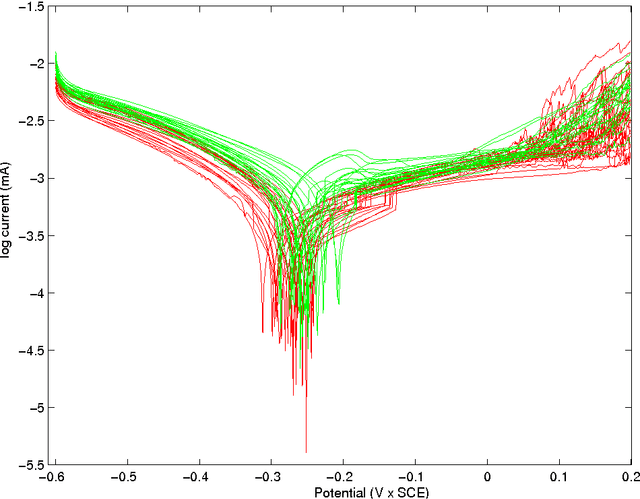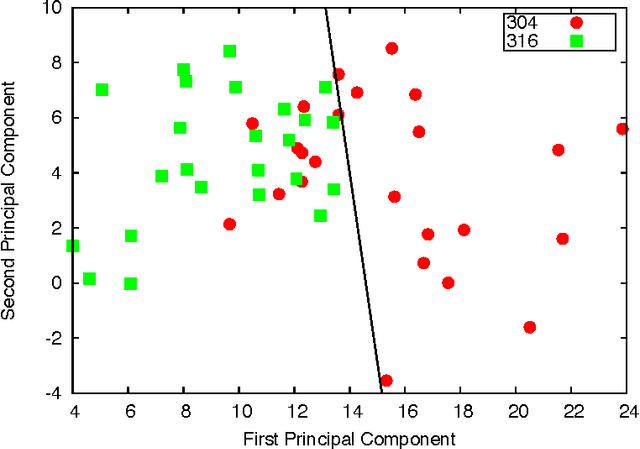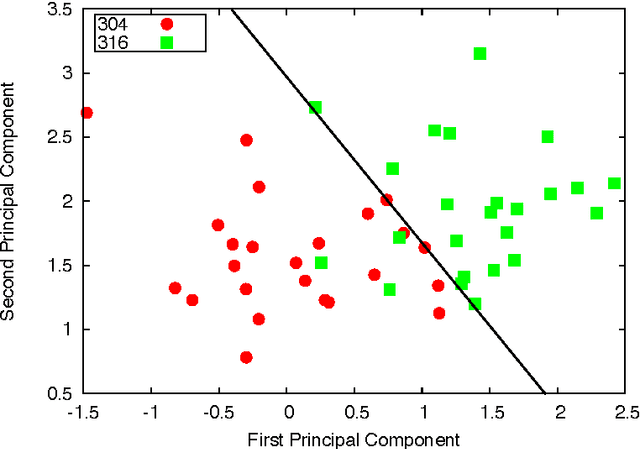Francisco J. P. Lopes
Multi-q Pattern Classification of Polarization Curves
May 10, 2013



Abstract:Several experimental measurements are expressed in the form of one-dimensional profiles, for which there is a scarcity of methodologies able to classify the pertinence of a given result to a specific group. The polarization curves that evaluate the corrosion kinetics of electrodes in corrosive media are an application where the behavior is chiefly analyzed from profiles. Polarization curves are indeed a classic method to determine the global kinetics of metallic electrodes, but the strong nonlinearity from different metals and alloys can overlap and the discrimination becomes a challenging problem. Moreover, even finding a typical curve from replicated tests requires subjective judgement. In this paper we used the so-called multi-q approach based on the Tsallis statistics in a classification engine to separate multiple polarization curve profiles of two stainless steels. We collected 48 experimental polarization curves in aqueous chloride medium of two stainless steel types, with different resistance against localized corrosion. Multi-q pattern analysis was then carried out on a wide potential range, from cathodic up to anodic regions. An excellent classification rate was obtained, at a success rate of 90%, 80%, and 83% for low (cathodic), high (anodic), and both potential ranges, respectively, using only 2% of the original profile data. These results show the potential of the proposed approach towards efficient, robust, systematic and automatic classification of highly non-linear profile curves.
Multi-q Analysis of Image Patterns
Dec 29, 2011



Abstract:This paper studies the use of the Tsallis Entropy versus the classic Boltzmann-Gibbs-Shannon entropy for classifying image patterns. Given a database of 40 pattern classes, the goal is to determine the class of a given image sample. Our experiments show that the Tsallis entropy encoded in a feature vector for different $q$ indices has great advantage over the Boltzmann-Gibbs-Shannon entropy for pattern classification, boosting recognition rates by a factor of 3. We discuss the reasons behind this success, shedding light on the usefulness of the Tsallis entropy.
 Add to Chrome
Add to Chrome Add to Firefox
Add to Firefox Add to Edge
Add to Edge